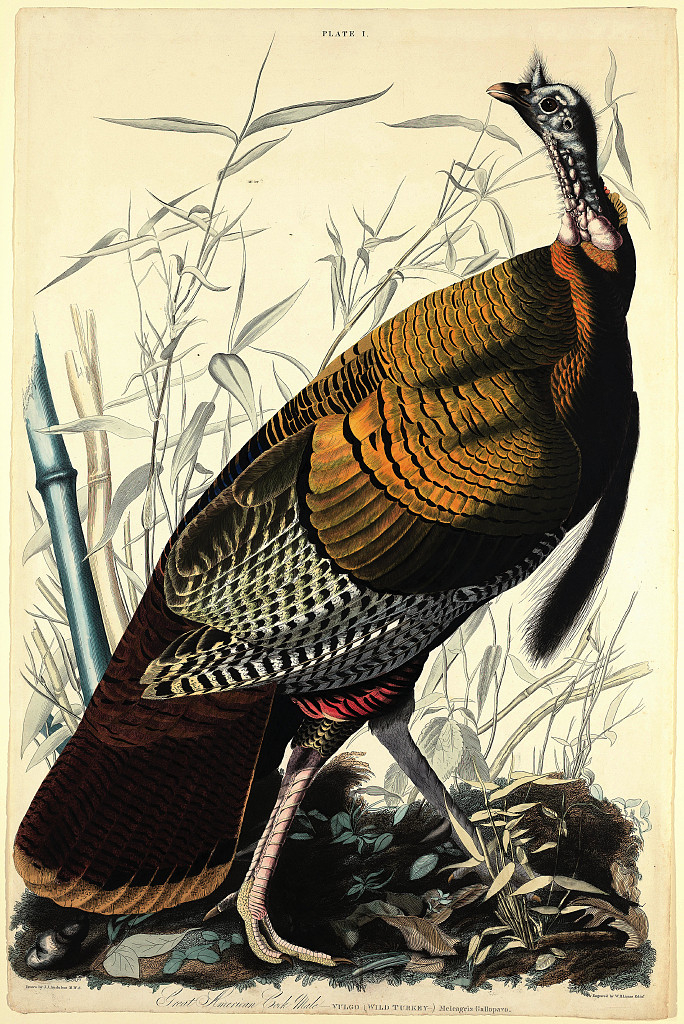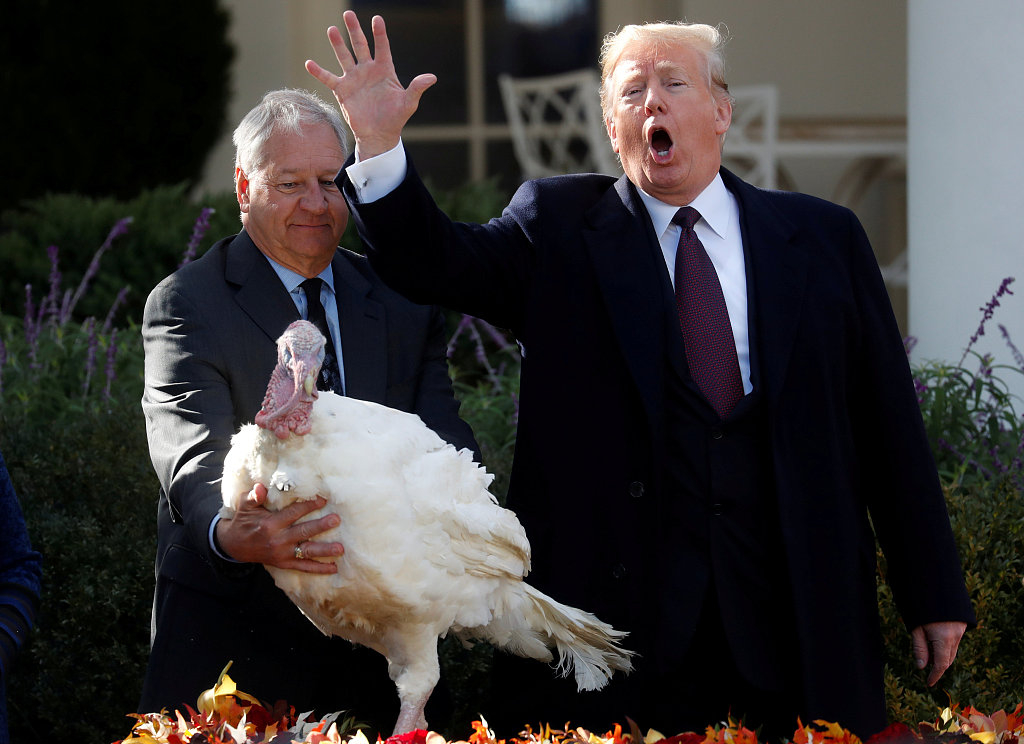Thanksgiving is coming! Do you have your turkey prepared?
Here are some fun facts about the thanksgiving centerpiece - besides for that it is delicious both roasted and smoked.
1, It was the Mayans who first domesticated turkeys.
Who was the first one to put a plate of turkey drumsticks on the dinner table? Probably the Mayans. Turkeys were domesticated in ancient Mexico, where people cooked its meat with chocolate, vegetables, fruit and iguana. The Mayans used turkeys both for feasting and for sacrificial offerings.
2, It may be the bird with most confusing name.
"Turkey" can refer to both the bird and the European country in English. Interestingly, in Turkey (as well as France , Russia and Poland), the bird is named "India". In Portuguese a turkey is called "Peru." In Chinese, the bird is simply called "Huo Ji", meaning "fire chicken."
3, The most expensive "turkey" is not edible.

"Wild Turkey" by John James Audubon. /VCG Photo
"Wild Turkey" by John James Audubon. /VCG Photo
A notable American ornithologist and painter, John James Audubon (1785-1851), was a fan of turkeys. One of his most famous paintings depicted a wild turkey, and it was sold at a quite considerable price of 185,000 dollars.
Yes, wild turkeys can fly, though not very far. Even domesticated turkeys are able to fly to a small height, enough for them to land on low branches and rest there. Besides, turkeys can swim, too.
5, Turkeys are better than us in several fields.
Turkeys have a 270-degree field of vision, even 360 when they rotate their heads. Against the idea that birds are color blind, turkeys can see colors. Although turkeys can't see in 3D, they can see UVA light, which helps them better identify predators, prey, mates, and food. Besides, they have amazing senses of direction. Turkeys can form a visual map of their territory, remembering tiny details of an area exceeding 1,000 acres even after more than a year apart.
6, Turkeys can be dangerous.
Turkeys have spikes on the back of their legs, called spurs, which they use to fight away competing turkeys and occasionally predators. Turkeys have been known to be aggressive toward humans and pets in residential areas. Even turkeys in farms may attack people because they view people as subordinates and attempt to dominate.
The dangling appendage that hangs from the turkey's forehead to the beak is called a snood. The piece that hangs from the chin is the wattle. These fleshy flaps can change color according to the turkey's physical and mental health — when a male turkey is trying to attract a mate, the snood and wattle turn bright red. If the turkey is scared, the appendages take on a blue tint. And if the turkey is ailing, they become very pale.
Both sexes have snoods and wattles. Studies have shown that female turkeys prefer mates with longer snoods, which may indicate health and good genes.
8, Why don't we eat turkey eggs?
Chickens lay about 300 eggs per year according to a consistent schedule, and turkeys couldn't be more different. Turkeys only lay about 100 eggs a year, and generally only during the spring. They start laying eggs at an older age than chickens, too. Turkeys are also a lot more broody than chickens; separating them from their eggs can be a challenge. However, turkey eggs can be found on the market, but they are less common and more expensive than chicken eggs.
9, Wild turkeys used to be on the brink of extinction.
The north American wild turkey population was almost wiped out by the early 20th century, when the entire U.S. population had been whittled down to a mere 30,000 due to hunting and the destruction of their woodland habitats. In the 1940s, many of the remaining birds were relocated to parts of the U.S. with recovering woodlands so the turkeys could repopulate. Today, that number is up to about seven million.
10, U.S. presidents pardoning thanksgiving turkeys is a historical tradition.

U.S. President Donald Trump declares a Thanksgiving turkey named "Peas" pardoned as National Turkey Federation Chairman Jeff Sveen looks on during the 71st presentation and pardoning of the Thanksgiving turkeys in the Rose Garden of the White House in Washington, U.S., November 20, 2018. /VCG Photo
U.S. President Donald Trump declares a Thanksgiving turkey named "Peas" pardoned as National Turkey Federation Chairman Jeff Sveen looks on during the 71st presentation and pardoning of the Thanksgiving turkeys in the Rose Garden of the White House in Washington, U.S., November 20, 2018. /VCG Photo
According to the National Turkey Federation, 88 percent of Americans eat turkey at Thanksgiving. As many as 10 million turkeys are consumed for Thanksgiving. However, on each year's Thanksgiving, one lucky turkey will be pardoned by the president of United States. This tradition is believed to date back to the time of Abraham Lincoln.
Officially, the tradition of the sitting president of the United States pardoning his Thanksgiving turkey dates back to John F. Kennedy, who decided to let his gift from the National Turkey Federation off the hook. But he wasn't the first president to let a turkey go free: When Abraham Lincoln's son Tad befriended one of the birds intended for Christmas dinner in 1863, kind-hearted Abe granted it a stay of execution.
(Cover photo via VCG, designed by CGTN's Li Yueyun. Edited by An Qi)
(If you want to contribute and have specific expertise, please contact us at nature@cgtn.com)